Lately I've been dedicating myself to fully utilizing the many low histamine herbs and spices at my disposal, including a personal favorite: sumac. This flavorful dried berry packs a sour punch, and as an antihistamine food, it makes the perfect low histamine replacement for lemon juice, or in this case, a complement to it.
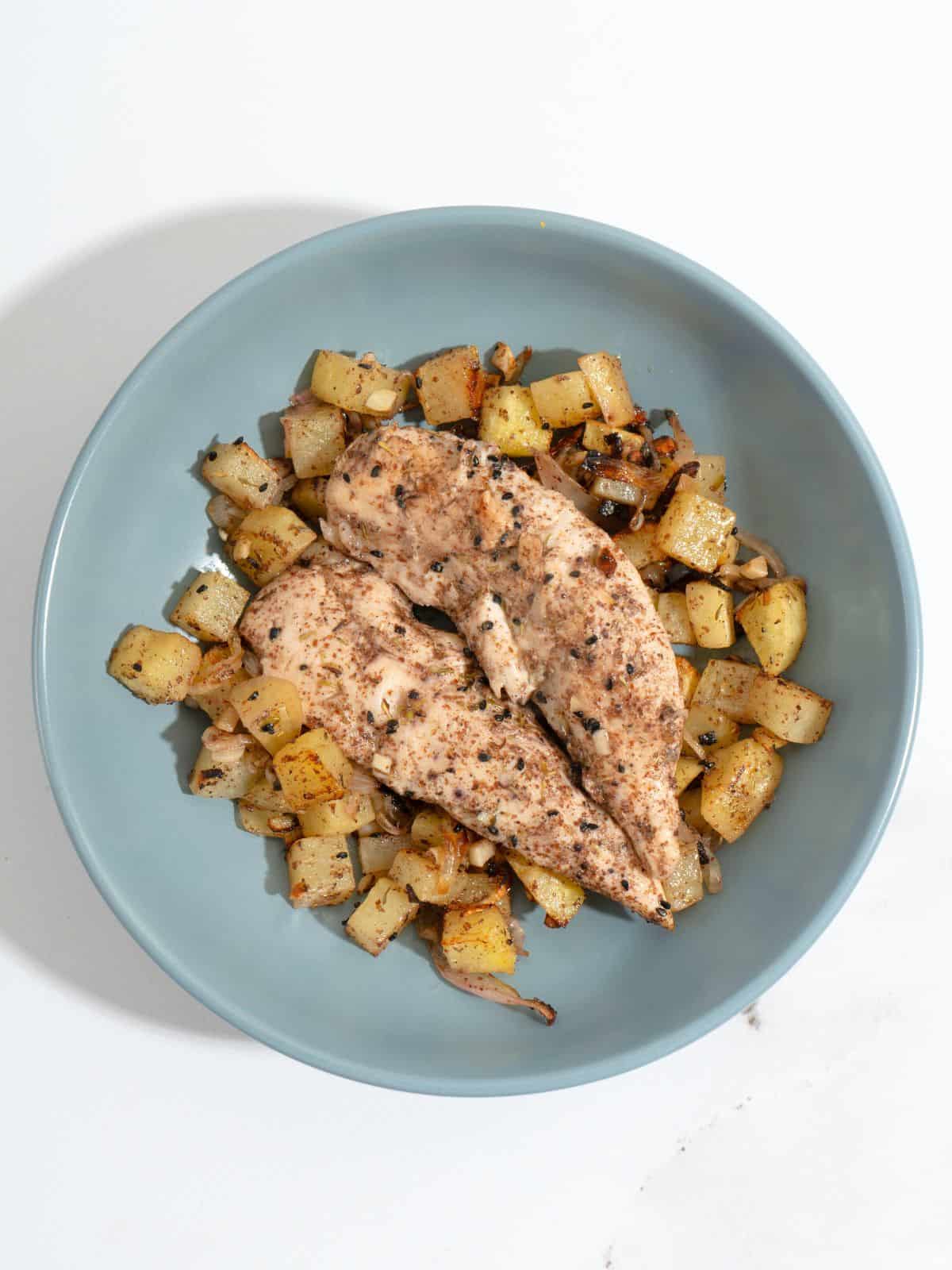
Jump to:
About this recipe
Great for Beginners. Luckily this recipe needs very few substitutions and even less babysitting, since both potatoes & onions are quite forgiving of potential burning, and the latter take great to caramelizing. Plus, it all comes together on one sheetpan.
Freezer Friendly: whether you cook it now or later, all these ingredients are exceptionally freezable, and it all tastes great even after defrosting. Unlike some of my other low histamine chicken dishes, like my favorite stir-fried lemongrass chicken or air fryer general tso's chicken, it also goes great with baked root vegetables.
Grain-Free Meal: while this tastes great with a side of carrots, altogether this onion & potatoes chicken is a meal in its own right, with no additions needed.
Ingredients
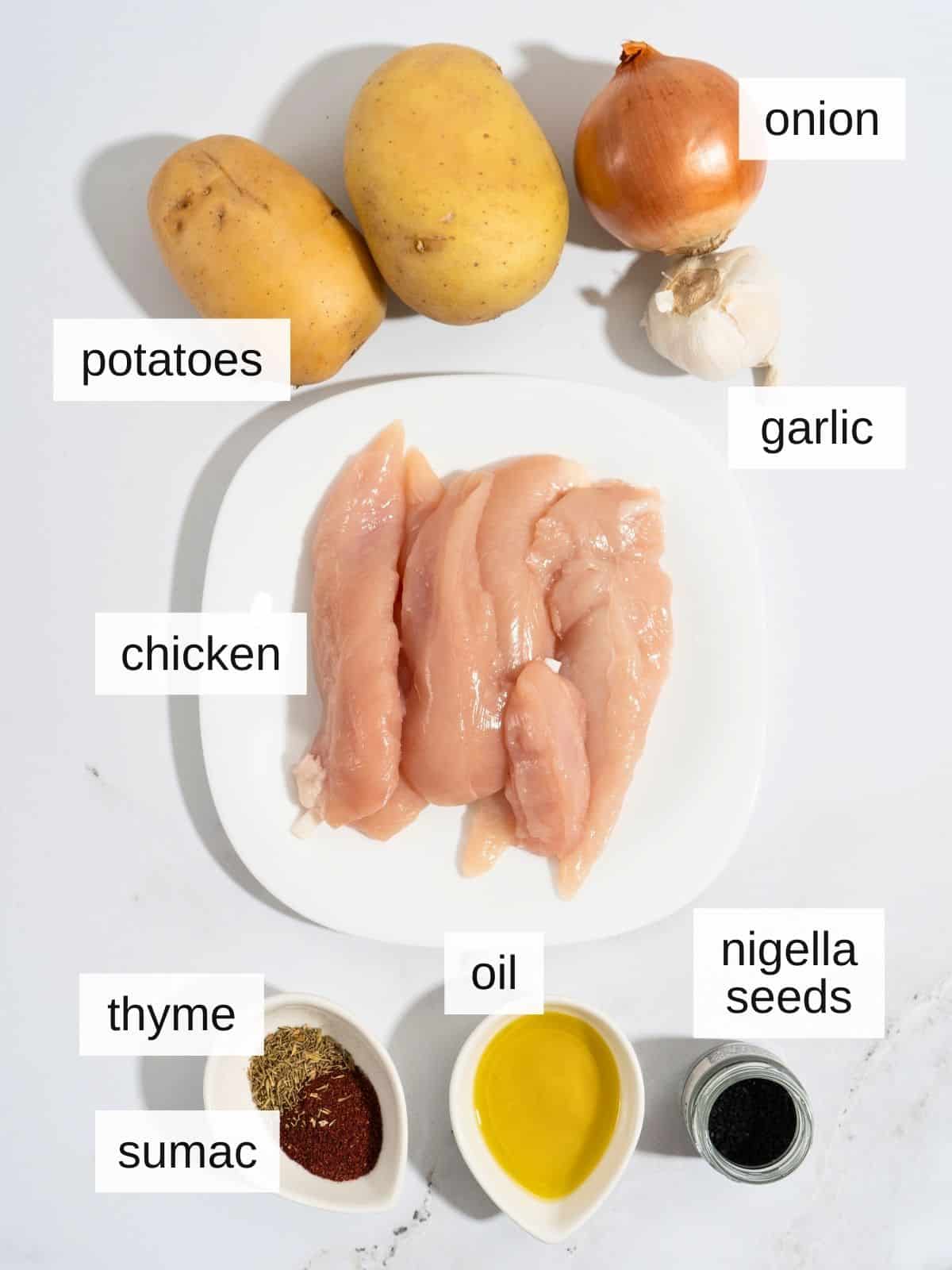
Chicken Tenders: you can use any cut of chicken, but the time and temperature in this recipe are tuned to chicken tenders, which go great with all the flavors going on in this recipe.
Baking Potatoes: you can really use any kind of potatoes, but baking potatoes are especially sturdy and easier to use for crisping. I also like to use larger 'baby potatoes' like with my za'atar potatoes, diced small (3-4 small potatoes).
Onion: you'll want to cut this in small pieces before mixing it with the chicken and potatoes; you can use any type of onion you have on hand, but the purple variety has more antioxidants.
Sumac: this red-hued spice is actually a ground-up dried berry with strongly antihistamine and acidic properties. It adds tang and a bit of sourness to the chicken's simple spice blend.
Nigella Seeds: also known as Nigella sativa, these small black seeds go by many names, one of the most fitting being black cumin. The flavor is toasty and umami, somewhere between cumin and wild oregano.
Thyme: this is my herb of choice to complement this particular dish, but that's mainly because it's what I already have in my pantry. If you have other favorites or other herbs on hand, you can choose any fresh herbs which tickle your taste buds.
Lemon Juice: this optional ingredient adds a kick of acid that really accentuates the complexity of the dish's flavor, without adding too much flavor of its own. Additionally, lemon contains loads of vitamin C, a known mast cell stabilizer, though some people are sensitive to citrus-derived forms of it.
How to make sumac onions & chicken: step-by-step instructions
Step 1. Prep your potatoes, garlic, onion, and lemon juice if using, and then preheat the oven to 400°F (205°C). Make sure to dice your potatoes quite small if using chicken tenders or breasts, otherwise they won't bake as quickly as the meat.
Step 2. Put all the ingredients in a bowl and mix them until all the potatoes, chicken, and onion are evenly-coated in garlic, oil, and spices.

Step 3. Place the entire mixture on a silpat or aluminum foil on a large baking tray, then bake in your preheated oven on convection for 10 minutes.
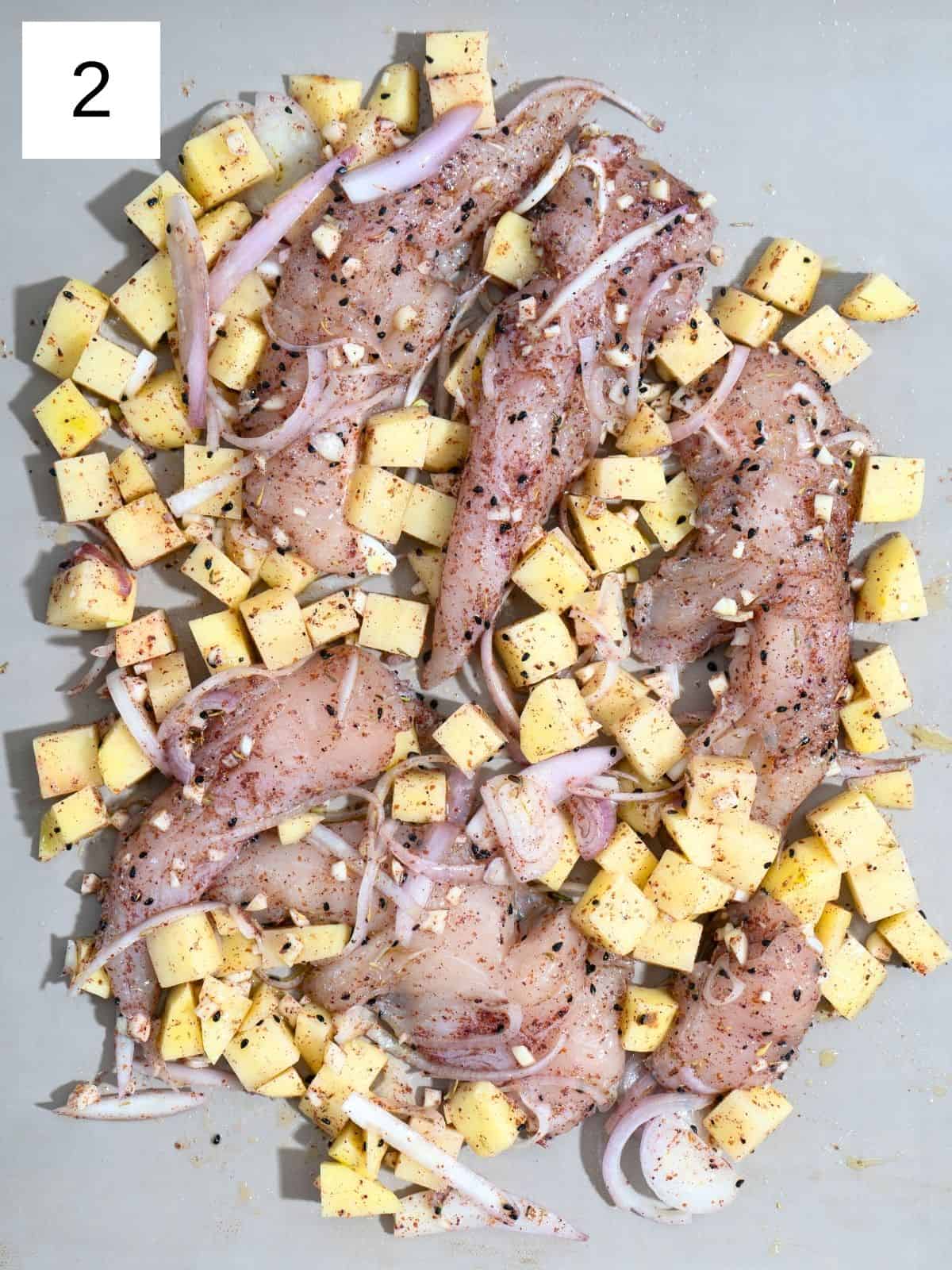
Step 4. Take it out and flip the chicken & stir the onions and potatoes, and then bake it for 5-7 minutes. The potatoes should be fork tender, and the chicken tenders should reach an internal temperature of 165°F (75°C) before your dish is done.
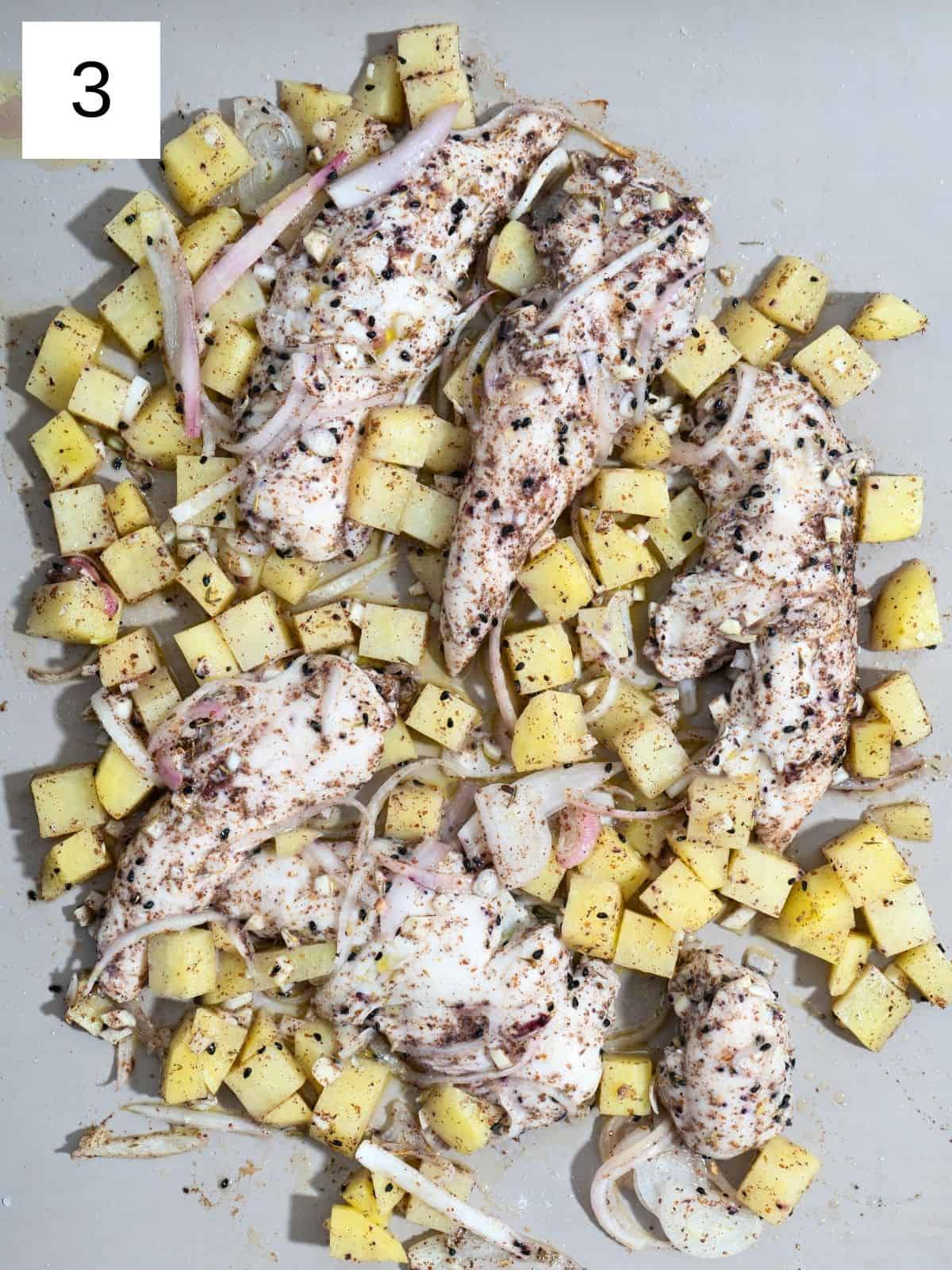
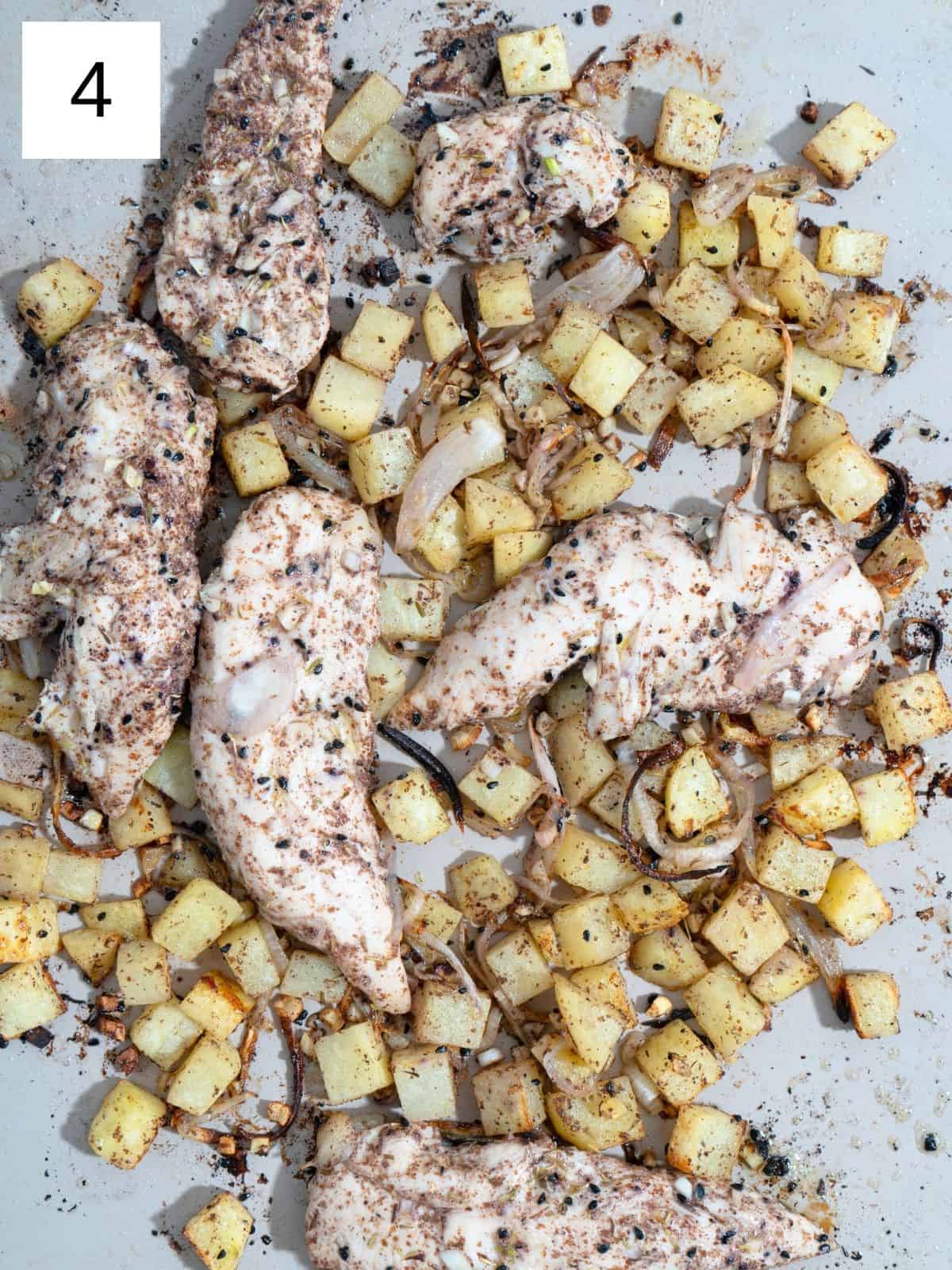
Step 5. If you tend to like crispier potatoes, remove the tenders and bake the potato & onion mixture for up to 10 more minutes, then serve.
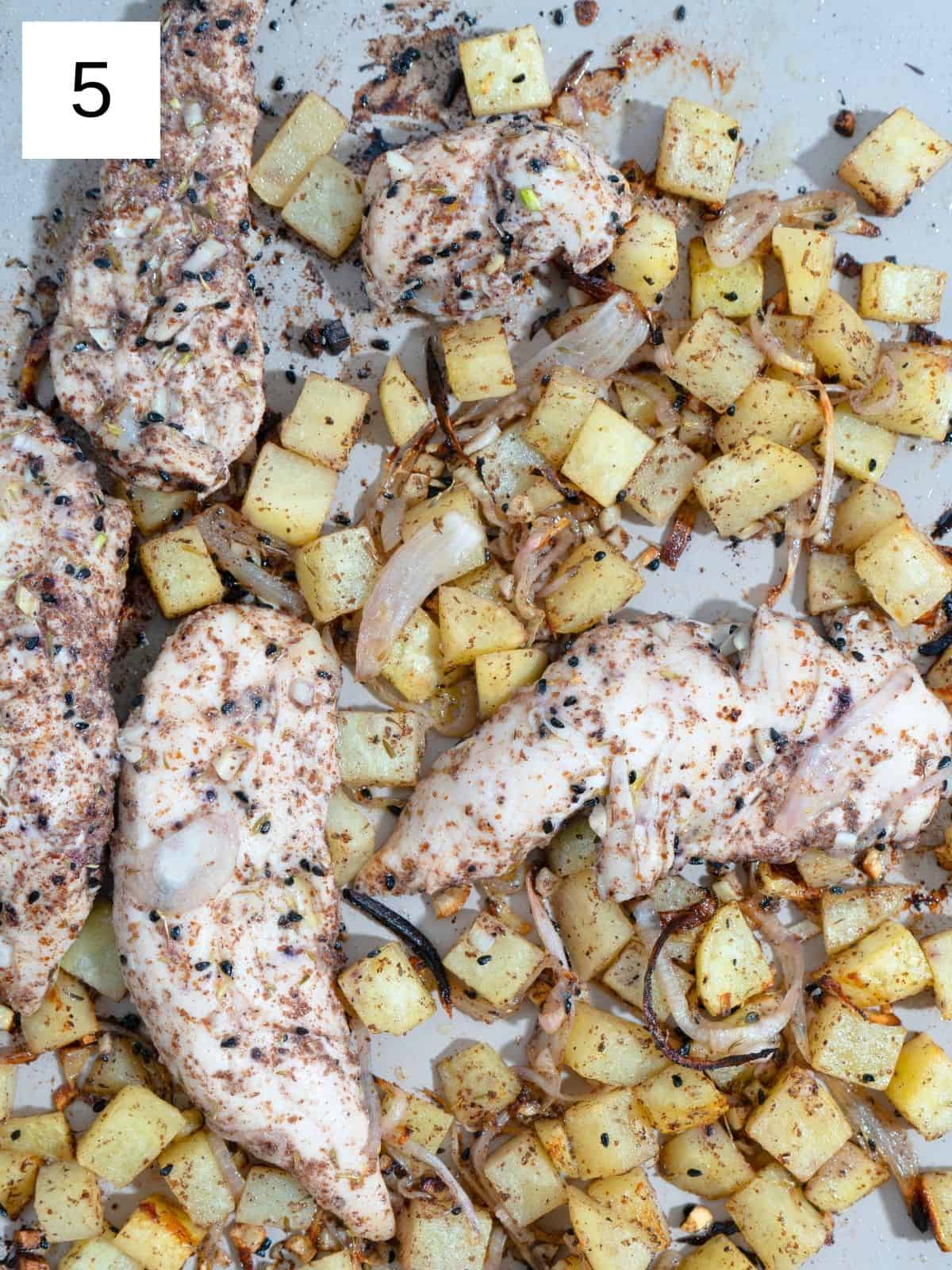
Recipe notes & tips
Baking the Potatoes: if you want crispier potatoes, make sure you cut them very small, and consider using baby potatoes so that they're softer in the middle. You may also want to bake them for 10-15 more minutes after the chicken, to crisp them up more.
Lemon Juice Alternatives: This low histamine chicken recipe is full of antihistamine ingredients, inspired by the Middle Eastern dishes I've come to know and love. The only ingredient that may be iffy for some of you is the lemon juice added at the end, but it's optional.
What to serve with sumac onion chicken & potatoes
- Roasted Garlic Asparagus
- Blistered Sumac Carrots
- Crispy Garlic-Ginger Kale
- Low Histamine Brussels Sprouts
📖 Recipe

Onion and Sumac Chicken with Potatoes (Sheetpan)
Ingredients
- 1 lb. boneless skinless chicken breast
- 1 pound potatoes diced small (3-4 small potatoes)
- 3 Tablespoons olive oil
- 4 cloves of garlic minced
- 1 large onion cut in half and then sliced thinly
- 1 ½ Tablespoons ground sumac
- 1 teaspoon nigella sativa seeds
- 1 teaspoon dried thyme
- 1 teaspoon salt +½ teaspoon if sumac is salt-free
Instructions
- Prep your potatoes, garlic, onion, and lemon juice if using, and then preheat the oven to 400°F (205°C). Make sure to dice your potatoes quite small if using chicken tenders or breasts, otherwise they won't bake as quickly as the meat.
- Put all the ingredients in a bowl and mix them until all the potatoes, chicken, and onion are evenly-coated in garlic, oil, and spices.
- Place the entire mixture on a silpat or aluminum foil on a large baking tray, then bake in your preheated oven on convection for 10 minutes.
- Take it out and flip the chicken & stir the onions and potatoes, and then bake it for 5-7 minutes. The potatoes should be fork tender, and the chicken tenders should reach an internal temperature of 165°F (75°C) before your dish is done.
- If you tend to like crispier potatoes, remove the tenders and bake the potato & onion mixture for up to 10 more minutes, then serve.
Notes
Lemon Juice Alternatives: This low histamine chicken recipe is full of antihistamine ingredients, inspired by the Middle Eastern dishes I've come to know and love. The only ingredient that may be iffy for some of you is the lemon juice added at the end, but it's optional.

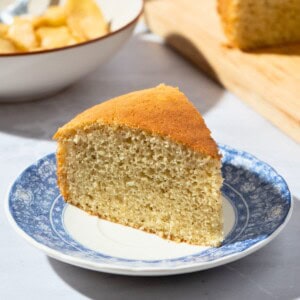













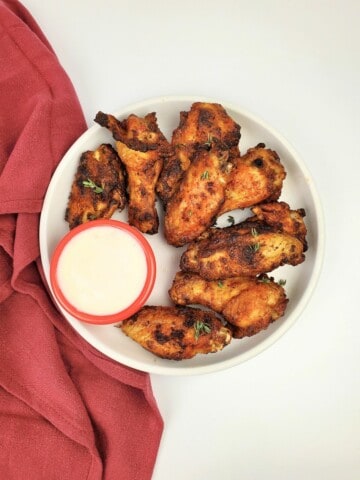
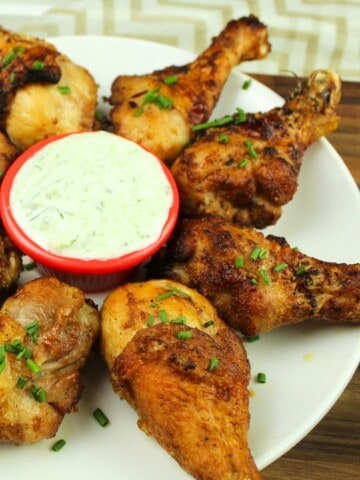
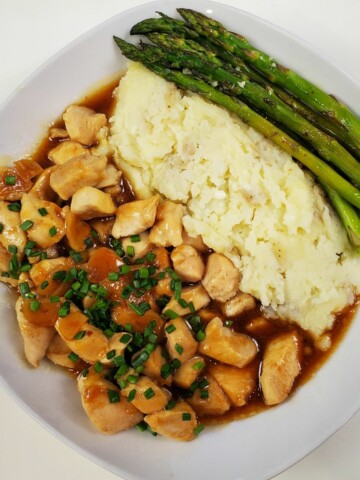
Adam says
Do you have any references on sumac's histamine properties? I checked your linked articles on low histamine spices and foods, I didn't see sumac mentioned.
Max says
I haven't been able to find any specific studies into whether sumac is high in histamine, but it would be hard to believe that it is (though it's high in vitamin C, which is mast cell stabilizing but conversely seems to both some people, as well). Sumac is a ground-up dried berry with a strongly antihistamine phytochemical profile and souring flavor properties, so it seems like a great alternative for lemon or lime juice (especially if you make a tea from it), but since it's not in common use in the US, not much attention has been given to it. The only study I could find was one focused on using sumac extracts as components of fish preservation (seeing if it prevents histamine formation, etc.): https://doi.org/10.1002/jsfa.2431.